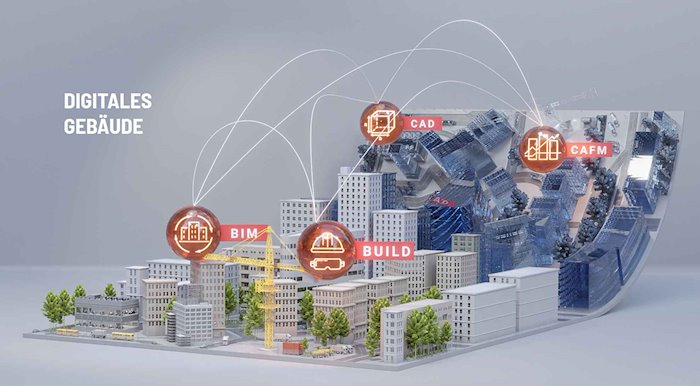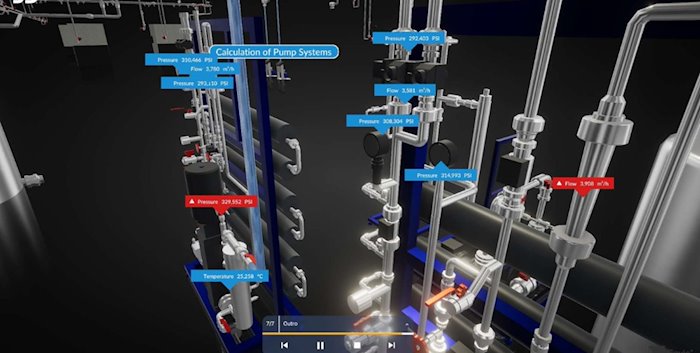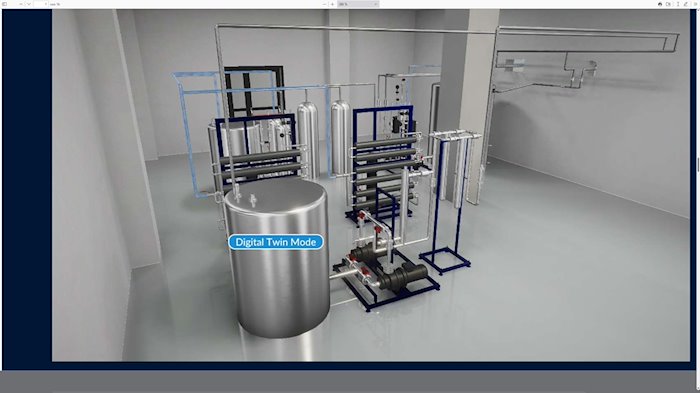Digital technologies can massively reduce emissions, energy requirements and costs of buildings.
Categories
Digital technologies can massively reduce emissions, energy requirements and costs of buildings.

Categories
Tags
Contact info
Silicon Saxony
Marketing, Kommunikation und Öffentlichkeitsarbeit
Manfred-von-Ardenne-Ring 20 F
Fax: +49 351 8925 889
Contact person:
What we mean by a “smart building” is in a constant state of flux – and is currently undergoing another significant transformation. Just a few years ago, an office complex was considered “smart” if it could automatically regulate its lights and heating depending on outdoor light and temperatures thanks to modern building control technology. Gradually, “smart” thermostats, lighting systems, roller shutters and awnings added further, often retrofittable, options for operating buildings more intelligently and conserving resources.
In the meantime, even more sophisticated technologies are entering the market that promise high efficiency gains: thermoelectrochromic windows controlled by sensors and decentralized electronics, for example, which can be darkened or brightened independently depending on the weather and can be adjusted electrically on the basis of decentrally evaluated sensor data. In trials in Greece and Sweden, a European consortium led by the Fraunhofer Institute for Organic Electronics, Electron Beam and Plasma Technology (FEP) in Dresden achieved energy savings of 35 to 60 percent for lighting, heating and cooling.
Taken on their own, however, all of these are “only” automated individual functions to save electricity, heat or maintenance effort.
“[…] you can speak of a ‘smart build’ if there is a central point from which you can access all the important data of the building” (Björn Schuster, authorized signatory and head of business development, N+P Informationssysteme GmbH).
The question therefore remains at what point a building can actually be classified as “smart” or “intelligent.” To be sure, the industry has not been able to agree on a uniform definition. “But it is reasonably safe to speak of a ‘smart building’ when there is a central point from which all the important data of the building can be accessed,” says business developer Björn Schuster of the IT specialist “N+P Informationssysteme”. Meanwhile, this function of a central information hub for buildings is increasingly being filled by a concept already familiar from aviation, automotive and other technology industries: the “digital twin.”

The visualization illustrates the concept from BIM design to digitally mirrored building. | Image: N+P
Beyond all the fascinating “smart” individual technologies that can now also be found in homes and other smaller properties, it is above all a completely new, holistic approach that is currently turning the “smart building” philosophy upside down: In “Building Information Modeling” (BIM), highly complex software is used during the planning of the building to create the basis for a “virtual building” including building technology, which in turn is the basis for further development into a “digital twin” of the real building that is ultimately being created.
The core of the project is an integrated software concept, which
The benefits of BIM show up long before the first brick is set for the building:
“Beyond the purely physical, geometric planning, BIM already knows the future functionalities in the design” (Torsten Thieme, Chief Developer, DEAXO).

Realistic representation of the virtual factory. | DEAXO/3DIT
“For example, when I design a subfab, the software can tell me whether the pipe thickness and pipe length for the ultrapure water that I have planned in there will fit, whether there is enough space available for the connections, whether the cable lengths will fit, and so on and so forth.” Simulating processes in building services, for example, during the design phase eliminates errors that would generate huge costs to fix later in the construction phase or even in operation.
The designers, technicians and engineers then feed this basic layout with ever new data over months and years: with the installed systems and their functions, with information from the construction, and later during operation with real-time operating data, with information about where there are often particularly large numbers of people and air-conditioning requirements and in which corner of the building someone rarely strays, when which elevator was serviced, and the like. In this way, the design grows into a complex digital twin that must be continuously updated.
The advantages – whether for the owner of office real estate or the factory operator – are obvious:

System from a virtual factory with measured values from the real factory. | DEAXO/3DIT
In the meantime, one in six (16 percent) construction tradesmen is already using BIM software. The use of this new evolutionary stage of “smart building” technologies is particularly widespread wherever the comparatively high initial outlay pays off quickly: at large real estate companies and their service providers, but also in microelectronics, which has always been a pioneer of high automation. The use of BIM is particularly obvious in new “greenfield” construction projects, which can be planned strictly digitally from the outset. “But we also see a clear trend that existing buildings are now also increasingly being converted to BIM,” reports Björn Schuster. “In most cases, the occasion is a major renovation.”
However, although virtual building models are currently becoming a real trend topic, there are still many challenges to be solved:
It is hardly surprising that, despite the many challenges involved, smart building technologies and BIM in particular have been spreading rapidly for some time. After all, these innovations can save considerable costs, especially in high-energy-price countries like Germany. Moreover, there is hardly any way around them if property owners want to meet increasingly stringent environmental regulations. “The building sector consumes some of the most energy in Germany,” emphasizes Matthias Hartmann of the German digital industry association “Bitkom.” “Along with transport and industrial production, the building sector is one of the main emitters of CO2 emissions. Digital technologies can massively reduce greenhouse gas emissions and the energy requirements of buildings.” According to a Bitkom study, this can save up to 14.7 million tons of CO2 emissions. This would correspond to almost 30 percent of the reduction target for the building sector of 51 million tons of CO2 formulated in the Climate Protection Act.
Energy consumption and costs in buildings are also seen as a central innovation driver on the way to the “smart building” by building systems technology provider Theben AG: “We see the need to put the energy consumption of buildings to the test,” says Paul Sebastian Schwenk, CEO of Theben AG.
“The dramatic development of energy prices is increasing the pressure, especially in the commercial sector.” (Sebastian Schwenk, CEO, Theben AG)

Paul Schwenk | Theben AG
Smart metering” in particular is emerging as a trend topic: Schwenk is convinced that intelligent meter technology will “make a decisive contribution to European supply security”. “Due to the use of solar power and wind power, the decentralized generation of energy is coming more and more into focus. But that also means we have to monitor the grids better and more precisely and control them in a more small-scale way than before.” And smart metering allows building automation and grid stability to “dovetail perfectly.”
It is also to be expected that the “smart” concepts from industry and the building sector will cross-fertilize and converge even more than before in the future.
“The bottom line is that with BIM we will move in the direction of automotive manufacturers, who are planning, building and operating ever more digitally. Except that the road will be a bit longer before the technical complexity in construction can be transferred to digital systems in its full bloom.” (Stefan Urlberger, Managing Director, swp software systems GmbH & Co. KG)
Once urban planners and engineering firms have reached the point where they have digital models of entire neighborhoods, districts or even complete cities in their computers or clouds, a whole new quality of planning can be expected. And this could result in added value for society, including urban environmental protection and the possibility of better preparing cities for climate change: “In particular, energy control, planning and much more would then be possible on a completely different level than we can currently imagine with our analog-digital glasses,” says Urlberger. “Urban development in particular will be able to benefit massively from this, if it is suddenly possible to work with much more knowledge. And artificial intelligence, with the availability of big data, can bring its strengths to a whole other level in terms of the sustainability of buildings or the use of building materials – even in terms of the microclimate in a neighborhood or district with horizontal or vertical greening and the like.”